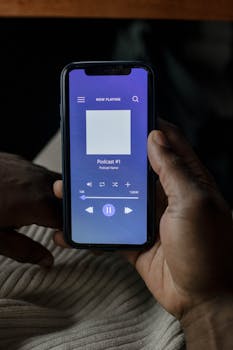Apps
Uncovering App Permissions: Protect Your Digital Privacy
Explore the importance of app permissions and how they affect your privacy. Understand the risks and make informed choices when installing new apps.
Advertisement
When downloading an app, we're often focused on its functionality and design, but it's crucial to consider the permissions it requests. These permissions are crucial because they define the app's access to various aspects of your device.
In recent years, there has been a significant increase in concerns about digital privacy. As a result, awareness of app permissions has become more important for users. Knowing what each permission entails is crucial for the security of personal information.
This article will cover the main permissions requested by apps, explaining their purposes and associated risks. The goal is to help users make informed decisions when installing new apps on their devices.
1. What are app permissions?
App permissions are requests for access to device resources that apps make when they're installed or first opened. These resources can include contacts, location, and camera.
Every app must declare its permissions, which can be classified into several categories. Some permissions are essential for the app to function, while others may not be necessary.
Modern operating systems, such as Android and iOS, have security mechanisms to inform users about these permissions. Transparency is an important step toward protecting privacy.
When accepting permissions, users often don't realize the impact on their privacy. It's crucial to read and understand each request before accepting to avoid unnecessary exposure.
Finally, user education about permissions should be a priority. Understanding what each permission entails can prevent serious security issues in the future.
2. Common types of permissions
Permissions can be grouped into different categories, depending on the access the application requires. Understanding these categories helps you better understand the requests that arise.
Among the most common permissions are access to location, contacts, photos, and cameras. Each of these accesses has specific purposes and should be evaluated carefully.
For example, a social media app might request access to the camera to allow users to share photos. This is important, but other apps might misuse this permission.
Additionally, some permissions can seriously compromise privacy. Permissions that access messages, calls, and call logs require extra attention.
Understanding the nature of permissions is essential for digital security. A well-informed user can make safer and more assertive choices when installing new applications.
3. The impact of location
Location access is one of the most debated permissions among users and developers. Many apps require this access to offer personalized services, such as nearby restaurant recommendations.
However, sharing your location can expose users to security risks. Apps that track your location in real time can make your information more vulnerable to third parties.
By assessing the need, it's possible to decide whether location should be shared. In this sense, apps that don't require location to function properly should be treated with caution.
Fortunately, many operating systems allow users to adjust their settings. You can choose to allow location access only while the app is in use.
Regularly reviewing granted permissions is essential. Keeping track of which apps have access to your location can prevent unwanted situations, such as privacy breaches.
4. Contact-related permissions
Access to contacts is a permission requested by many apps, especially social media and messaging apps. This permission allows platforms to facilitate connections between users.
However, not all apps that request this permission actually need it to function. It's important to evaluate whether contact sharing is actually beneficial.
When contacts are stored on servers, there's a risk of personal information being leaked. This can result in spam or even more serious situations, such as fraud.
Therefore, it's crucial to verify that the app is trustworthy before granting access to your contacts. Warnings about passwords and personal information should also be considered.
A healthy practice is to periodically review which apps have access to your contacts and revoke unnecessary permissions. Controlling your personal information is an important step toward protecting your privacy.
5. Photo and Media Permissions
Apps that require access to photos and media serve a variety of purposes. These include photo editing apps, social media platforms, and even some games. These permissions are common and widely used.
However, the risk of exposing personal or sensitive images is high. If an untrusted app gains access to this information, your photos could be compromised.
Therefore, always question the need for access. If a gaming app requests access to your photos, it may be a red flag to avoid using it.
Furthermore, it's crucial to maintain a certain level of skepticism regarding lesser-known apps. A lack of recognition can be a risk to your privacy.
Finally, always review the permissions granted. The freedom to restrict access is an effective way to protect sensitive personal data and ensure greater security.
6. Using the camera and microphone
Access to the camera and microphone is one of the permissions that generates the most discomfort among users. These features can compromise privacy if used inappropriately.
Video calling or photography apps justify the use of these features, but it's important to consider their purpose. A productivity tool shouldn't need access to the camera or microphone.
If an app requests this permission without a valid reason, it may raise suspicion. It's essential to research and ensure the app is legitimate before granting access.
Modern technology has advanced the way users can control these permissions. Today, it's possible to disable access and enable it only when needed.
Therefore, constant vigilance over these accesses is essential. Proactive control can prevent abuse and protect user privacy in an increasingly complex digital world.
7. How to manage app permissions
Managing app permissions is a crucial step in protecting your personal information. Knowing where and how to adjust these settings on your device is crucial for privacy.
Operating systems offer built-in options so you can adjust and review permissions at any time. It's a useful tool that should be used regularly.
Regularly review which apps have access to which permissions. If an app is no longer used, consider revoking its permissions entirely.
Additionally, uninstalling apps that request excessive or irrelevant permissions is an effective measure. This not only improves security but can also optimize device performance.
Finally, stay informed about app updates and privacy policy changes. This helps ensure you're always one step ahead in protecting your personal information.
Conclusion
Discussing app permissions is an essential step toward more conscious and secure technology use. Understanding access requests allows for more informed choices, ensuring security and privacy.
In addition to being aware of common permissions, it's vital to adopt regular review and management practices. This ensures that protecting your personal data becomes an accessible and viable reality.
App permissions shouldn't be accepted without question. Digital security is a user right and should be prioritized in all interactions with apps.
Knowledge and information are your best tools for protecting your privacy. Always be alert and critical of requests that don't make sense.
Finally, remember the importance of periodically reviewing app permissions on your device. This simple practice can make a significant difference in protecting your personal information.





